With the promotion and popularization of electric vehicles, more and more power batteries are used in electric vehicles. A big problem facing power lithium-ion batteries is the sharp decrease in the range of winter cruising, which is mainly related to the characteristics of lithium-ion batteries. Lithium-ion batteries have poor kinetic conditions at low temperatures, so capacity, rate performance, and especially charging performance are greatly reduced. This is especially serious in the cold northern winter, so in order to ensure electric vehicles in winter The performance of the battery pack generally increases the heating system, but the current heating system is relatively inefficient (usually it takes several tens of minutes to heat the battery), which seriously affects the convenience of the use of the electric vehicle. Therefore, the thermal management problem of lithium ion batteries at low temperatures is a problem that we need to consider in the battery design and battery design process.
This article refers to the address: http://
Recently, Guangsheng Zhang of the University of Pennsylvania in the United States proposed a battery pack thermal management strategy based on internal heating of lithium-ion batteries, which can restore the lithium-ion battery to normal temperature performance in a short time. For example, it only takes 112s at -40 °C. The performance of the lithium-ion battery is fully restored, and the technology also significantly increases the cruising range of the electric vehicle, for example, the electric vehicle's cruising range is increased by 49% at -40 °C.

The core of the technology is a self-heating battery. The design of the battery is as shown in the figure above. Two Ni sheets need to be placed inside the battery. The impedance of each Ni sheet is 78mW, which is placed at 1/4 and 3/4 thickness of the battery. At the same time, the two Ni pieces are connected in parallel and connected to the positive and negative electrodes through a switch for controlling whether the lithium ion battery is heated. Guangsheng Zhang designed a control scheme based on the above self-heating battery, which can control the opening and closing of the heating switch according to the load condition of the electric vehicle.
We know that in the use of electric vehicles, in addition to normal driving, there will be brakes, etc. Electric vehicles generally recover energy during braking, etc. When the temperature of the lithium-ion battery is sufficient, this part of energy will be stored directly. In a lithium ion battery, when the temperature of the lithium ion battery is too low, in order to prevent the lithium ion battery from being charged at a low temperature, lithium is deposited on the surface of the negative electrode, and this part of the energy is usually wasted. Guangsheng Zhang designed the braking energy recovery management program at low temperature by using the characteristics of self-heating battery rapid self-heating. When the battery temperature is low, the energy is first used to heat the battery. When the battery temperature is heated to a suitable temperature, then The recovered energy is stored to the battery.
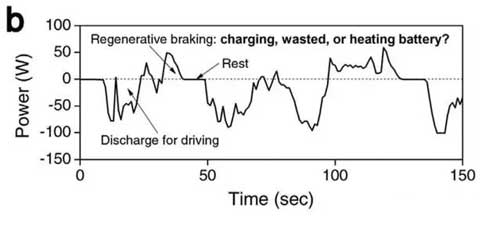
The following figure shows the changes in current and power parameters of the lithium-ion battery during operation under simulated driving conditions. It can be noted from Figure d that the battery current is the same when the external discharge current is present, only when the battery is charged and the battery is on hold. The time manager will use the internal current to heat the lithium-ion battery, and the power curve also shows the same characteristics, which indicates that the management strategy will not affect the use of electric vehicles. At the same time, the strategy also makes the energy recovered by the brakes fully applied. First, it is used to heat the battery, and then to charge the battery. Figure c is the temperature and internal resistance diagram of the battery. It can be noted from the figure that due to the rapid heating of the internal heating battery, the battery temperature is raised from -40 ° C to 10 ° C, only 112 s, while the internal resistance of the battery It also drops rapidly from 125mW to 10mW, which is closely related to the rapid recovery of lithium-ion battery performance at low temperatures. Thanks to such a fast heating rate, it takes only 13s, 33s, 46s and 56s for lithium-ion batteries to recover from 0, -10, -20 and -30 °C to 10 °C, which is of great significance for the use of electric vehicles in winter.
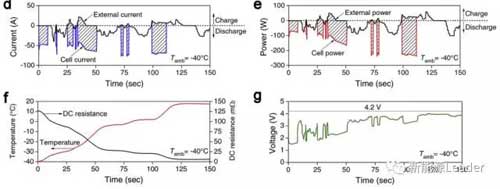
The figure below shows the current, power, battery temperature and battery voltage data of the control group using self-heating battery and normal battery at -40 °C. The left side is the experimental group with self-heating battery, and the right side is blank. Control group. From the battery temperature point of view (Fig. c experimental group, Fig. g control group), the temperature of the self-heating battery rises much faster than the control group, and the experimental group recovers to 20 °C after 112s, and realizes all The recovery of the brake energy, while the control battery used 3000s, the temperature returned to 0 °C, resulting in the inability to recover the brake energy.
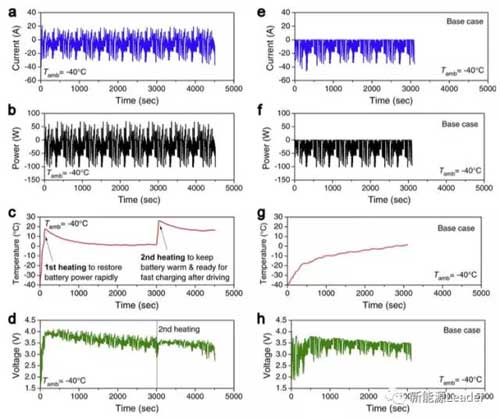
The figure below shows the proportion of energy consumed by each part of the experimental group and the control group during use. It can be seen that the energy of the experimental group that can be used for driving (red) is greatly increased compared with the control group. Part of the reason is that the temperature of the battery in the experimental group rises rapidly, so the brake energy recovered is far more than the control group, so the driving mileage of the car is significantly improved.
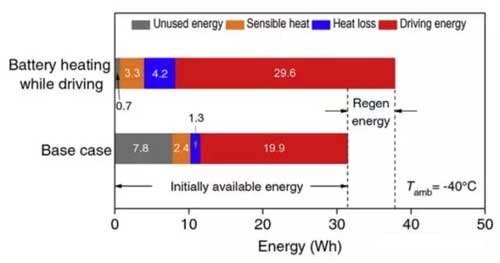
The figure below shows the energy variation curve of the self-heating experimental battery that can be used for driving at different temperatures. As can be seen from the figure, at -30, -20, -10 and 0 °C, the battery can be used. The driving energy is 78%, 80%, 85% and 90% at room temperature. At the same time, the self-heating battery design and management strategy is still very effective for the future high-energy battery. The calculation shows that when the specific energy of the lithium-ion battery is increased to 300Wh/kg, the energy used for heating the battery at -40 °C will be from the present. 8.7% dropped to 4.8%, heat loss can drop from 11.9% to 6.6%, and the energy available for driving can be increased from 74% to 85%. By further improving the insulation performance of the battery, it can also reduce the energy that the battery can use for driving. Further increased from 85% to 94%.
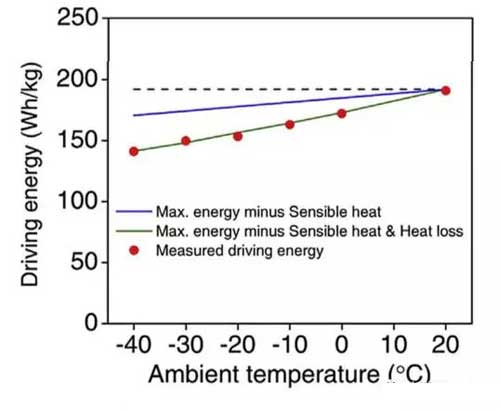
Guangsheng Zhang uses the characteristics of rapid heating of self-heating battery and the corresponding management strategy, which can make the lithium ion battery recover from the low temperature at a low temperature during idle time, thus helping the lithium ion battery to quickly recover the electrochemical performance without affecting the electric power. The normal driving of a car is of great significance for improving the ease of use of an electric car in an alpine region. At the same time, the rapid recovery of the temperature of the lithium-ion battery also means that the lithium-ion battery can be charged in a short time, thereby achieving full and effective recovery of the braking energy, which can also significantly increase the lithium-ion battery can be used to drive the electric vehicle. The energy, which significantly improves the cruising range of electric vehicles. In general, Guangsheng Zhang's battery management strategy makes full use of the characteristics of self-heating batteries, which is of great significance for improving the convenience of electric vehicles and increasing the cruising range of electric vehicles at low temperatures.
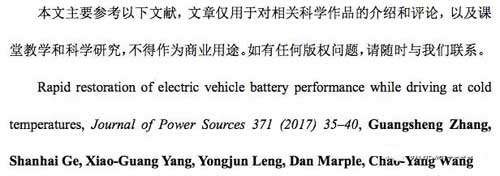
Led Display Controller,Led Screen Controller,Colorlight Led Controller,Led Screen Controller Board
ShenZhen Megagem Tech Co.,Ltd , https://www.megleddisplay.com
